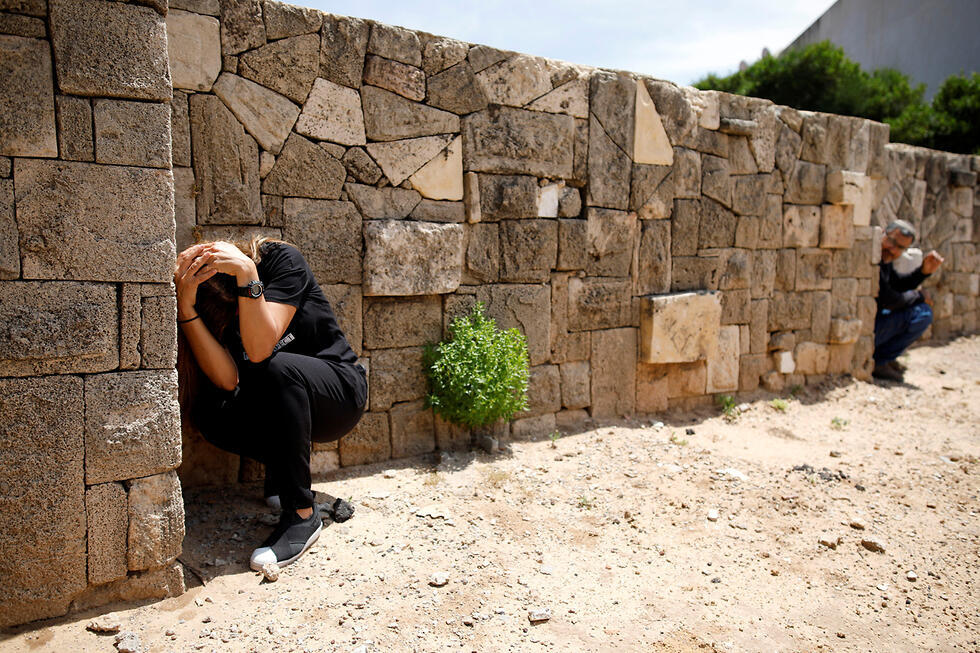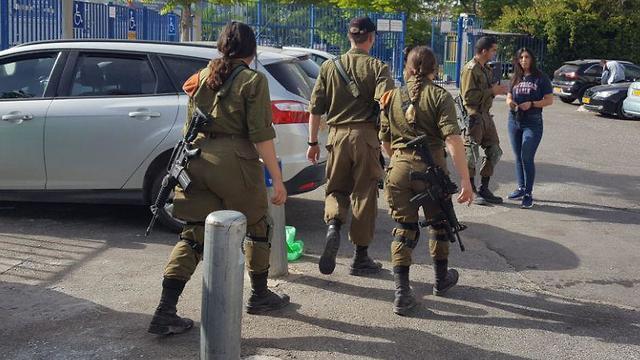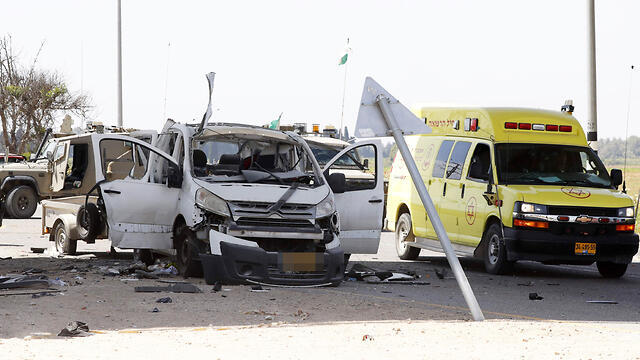Getting your Trinity Audio player ready...
We can easily assess the extent of fear and shock experienced by people who awake from their sleep to the sound of a siren indicating an imminent rocket attack by the sheer amount of injuries sustained during the latest round of fighting between Israel and Hamas; most injuries were sustained while running in terror to the bomb shelter.
and Twitter
Time and time again, sometimes even multiple times during one night, they are overwhelmed by the stress and anxiety, reminding them of the harsh reality in which they live and cannot escape, because they must always be alert for the next siren warning them of yet another ballistic danger to them and their loved ones.
3 View gallery


Israelis ty to take cover during a rocket attack from Gaza (Photo: Reuters)
(צילום: רויטרס)
Now multiply that by the 200,000 children who did not go to school Sunday, and add to that an additional 200,000 adults — parents, the elderly, teachers, the disabled, new immigrants — and calculate how many more victims are added to the "circle of trauma" with each rocket fired from Gaza.
Everybody seems to be meticulously counting the amount of strikes, the death count and other figures. But who is counting all of those affected by the trauma? The same trauma experienced following each round of fighting and terror attack.
3 View gallery


Soldiers escorting Israeli children in the south to school (Photo: Ittay Shickman)
(צילום: איתי שיקמן)
Prof. Zehava Solomon, a trauma researcher at Tel Aviv University, conducted a study titled "Living in the Shadow of Missiles" that was released in 2017, three years after Operation Protective Edge. It examined how residents of Sderot and other communities near Gaza react to the stress imposed on them by the situation. The study found that 85% of children there suffer from anxiety and almost half of them suffer from depression.
The study was conducted in conjunction with the Social Security Institute, the Health Ministry, the Ministry of Welfare and the Israeli Trauma Coalition. It also found that 39% of adults suffer from feelings of chronic anxiety, 28.4% of them suffer from anger management issues, 35% suffer from insomnia and sleep issues and 30% have trouble concentrating.
3 View gallery


The vehicle of an Israeli driver killed when it was hit by an anti-tank missile fired from Gaza (Photo: AFP)
(צילום: AFP)
One does not need to be an academic to recognize that an entire generation of Israelis are growing up with feelings of despair and anxiety that is prevalent even during periods of relative calm.
As the rockets radius expands, the circle of trauma victims is enlarged. The overcrowded trauma centers established in the Gaza region will need to be replicated in cities and towns further north, with all their associated costs.
It is not enough for the security cabinet to meet behind closed doors, they must also go out and encourage the public with hope and the demonstration of true leadership. The residents need to feel acknowledged, publicly.
Acknowledgement of their plight is part of the war effort. And words are not enough. They ought to receive economic benefits in order to help ease their difficult plight and maintain national resilience in the face of adversity.

